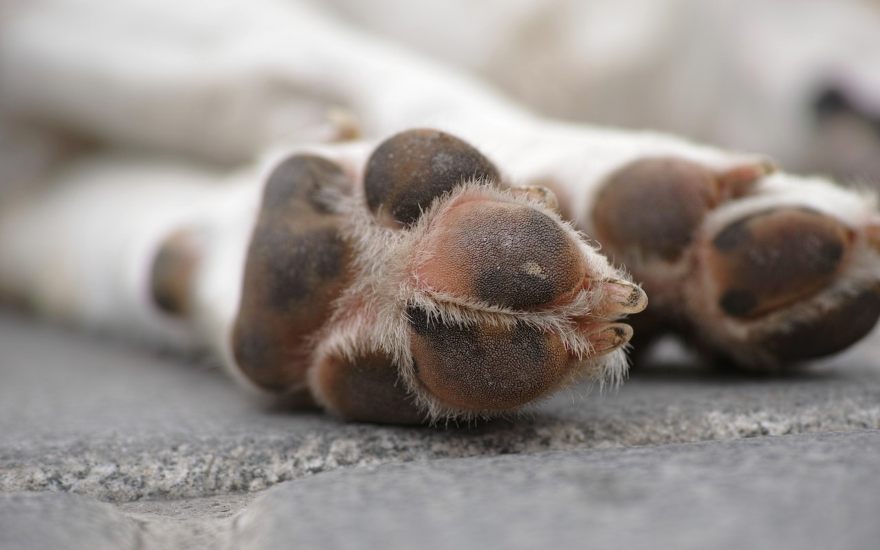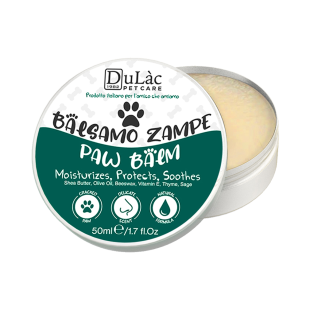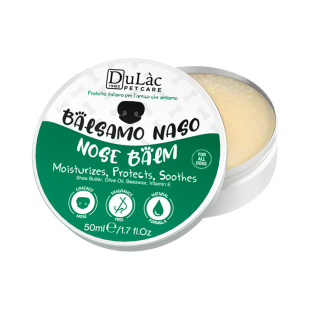Here's how to take care of your dog's paw pads in case of dryness
Dry cracking dog pads are a fairly common condition, and action needs to be taken as quickly as possible to avoid infections, pain and even joint damage due to poor posture.
Pads, in fact, are a very important part of dogs' paws: they cushion shocks, allow the animal to sweat, help regulate body temperature and stay balanced.
Moreover, as they stand in close contact with surfaces, in addition to supporting the entire body of the dog, they must be in perfect health if we want to prevent our four-legged friends from experiencing discomfort and pain.
But why do dogs’ pads sometimes get dry? And which remedies should we take to treat this discomfort?
In this article we will explore the causes of cracked paw pads and see what the right remedies are according to the circumstances.
Read also: Does your dog have a dry, cracked nose? Let’s look at the causes, remedies and reasons for concern
Main causes of dry paw pads in dogs
Under normal conditions, the paw pads of dogs are soft, shiny and well moisturized thanks to the action of sweat glands. It may happen, however, that they become dehydrated with cracks appearing on their surface.
Here below, are the main causes of dry fingertips in dogs:
- Excessive heat: one of the main causes of cracked paws is the extremely hot ground temperature. It is therefore no coincidence that during the summer it is not advisable to walk dogs in the hottest hours of the day: your furry friends risk dangerous heat strokes, and their paw pads can get burned when coming into contact with the excessive heat of the asphalt pavements.
- Cold temperatures: just like the skin on our hands, the skin on dogs' paw pads is very sensitive to winter temperatures. If you don’t intervene in time, extreme cold can chap and crack your dog’s paws, hence causing very painful splits.
- Rubbing against rough surfaces: walking, running and jumping up and down in the countryside is usually much more fun for a dog than being kept indoors! But pay attention to paw care: a cream for the dog's fingertips is always recommended before and after outdoor outings.
- Allergic reactions: food or contact allergies may manifest themselves in cracking, swelling and itching of the dog’s paw pads (as well as of its nose and other skin areas).
- Hyperkeratosis: this is a disease that causes excess keratin; it makes the skin of the dog's fingertips and nose extremely rough and thicker than it should be. In this case, both the nose and the paws become very rough, hard and swollen.
- Dermatitis: (the most common types in dogs are interdigital dermatitis and pododermatitis), that manifests itself in dryness and cracking of the fingertips as well as other symptoms such as the appearance of scabs, ulcers, and papules.
- Nutritional deficiencies: nutritional deficits, and particularly zinc deficiency, can provoke extreme dehydration and thickening of the skin on dog paws. It is important to know that some dog breeds are particularly predisposed to zinc deficiency. The main ones among them are: Siberian Husky, Great Dane, Bull Terrier, Rhodesian Ridgeback, Labrador, German Shepherd, German Bracco, Doberman, Golden Retriever, Rottweiler and Beagle.
Let us now see what the remedies to cracked and dry fingertips in dogs may be.

Natural (and non-natural) remedies against dry paw pads
Chapped fingertips can cause great difficulties to dogs. It is therefore essential to take the correct steps and find the right remedies.
In case of dryness caused by external agents (too hot or too cold temperatures and rubbing against rough surfaces), it is usually sufficient to use a cream for the dog’s fingertips.
The ointment must be specifically suited to dogs and it must be as natural as possible to prevent them from getting intoxicated in case they licked their paws.
Prevention is also key. If you want to take care of your dog’s paw pads, here are the steps to follow:
- apply paw balm both before walks (so as to protect the fingertips from rubbing against the ground), and after returning home (to better moisturize the pads).
- In the summertime, avoid taking your dog for walks during the hottest hours of the day; the asphalt might be hot even in the evening, so prefer shaded areas.
- If winter is harsh and your dog has very delicate paws, try to persuade him to wear special booties or socks. Should he refuse, dry his paws right away once you get home and moisturize them with specific cream for paws.
On the other hand, pathologies such as allergic reactions, hyperkeratosis, dermatitis and nutrient deficiencies must necessarily be treated by the vet.
Distinguishing the problems is, in general, very simple. In cases of disease, dryness is accompanied by swelling, thickening of the skin, tearing, and itching. Instead, if the pads are simply dehydrated, all these symptoms should not manifest.


